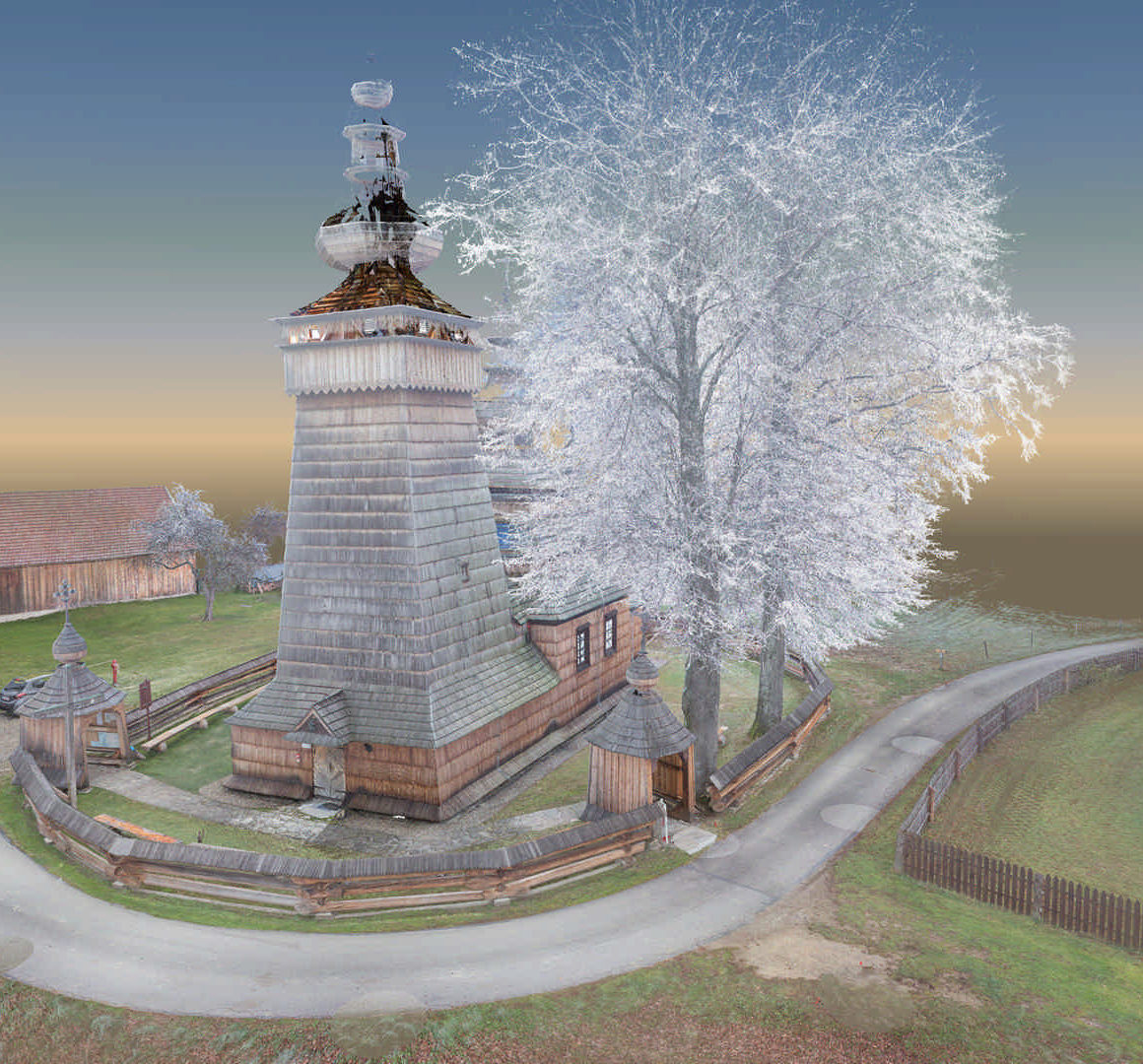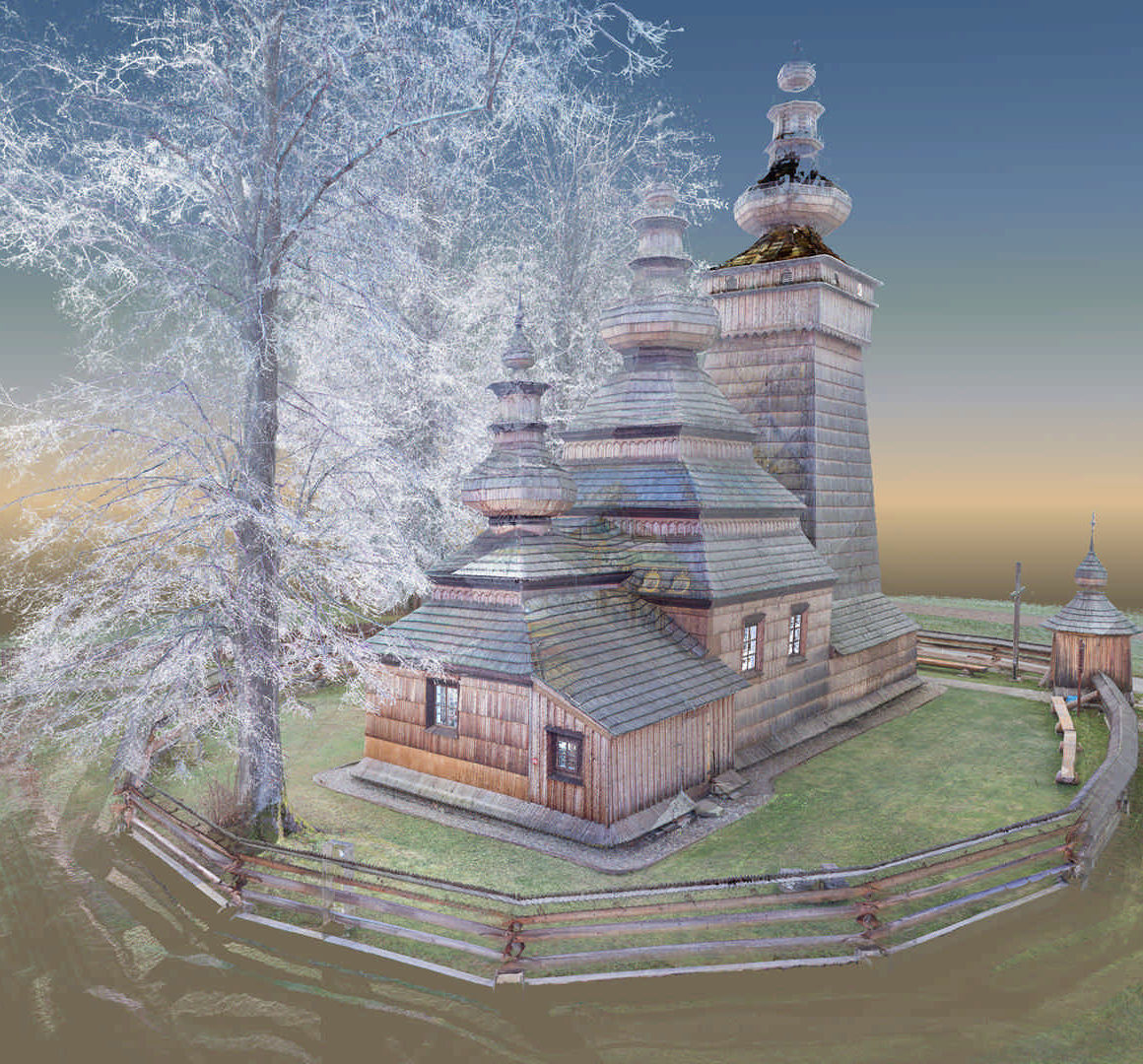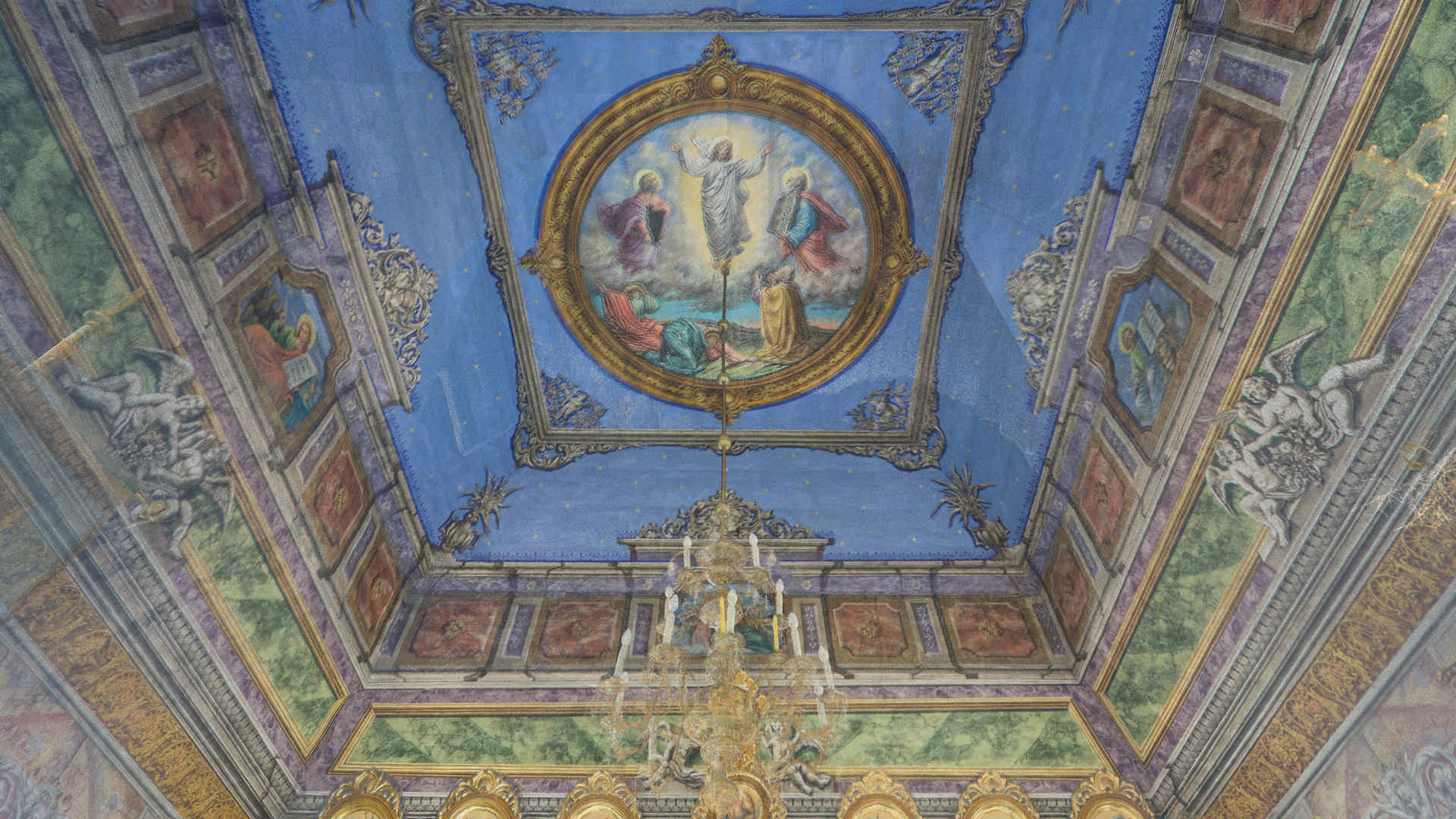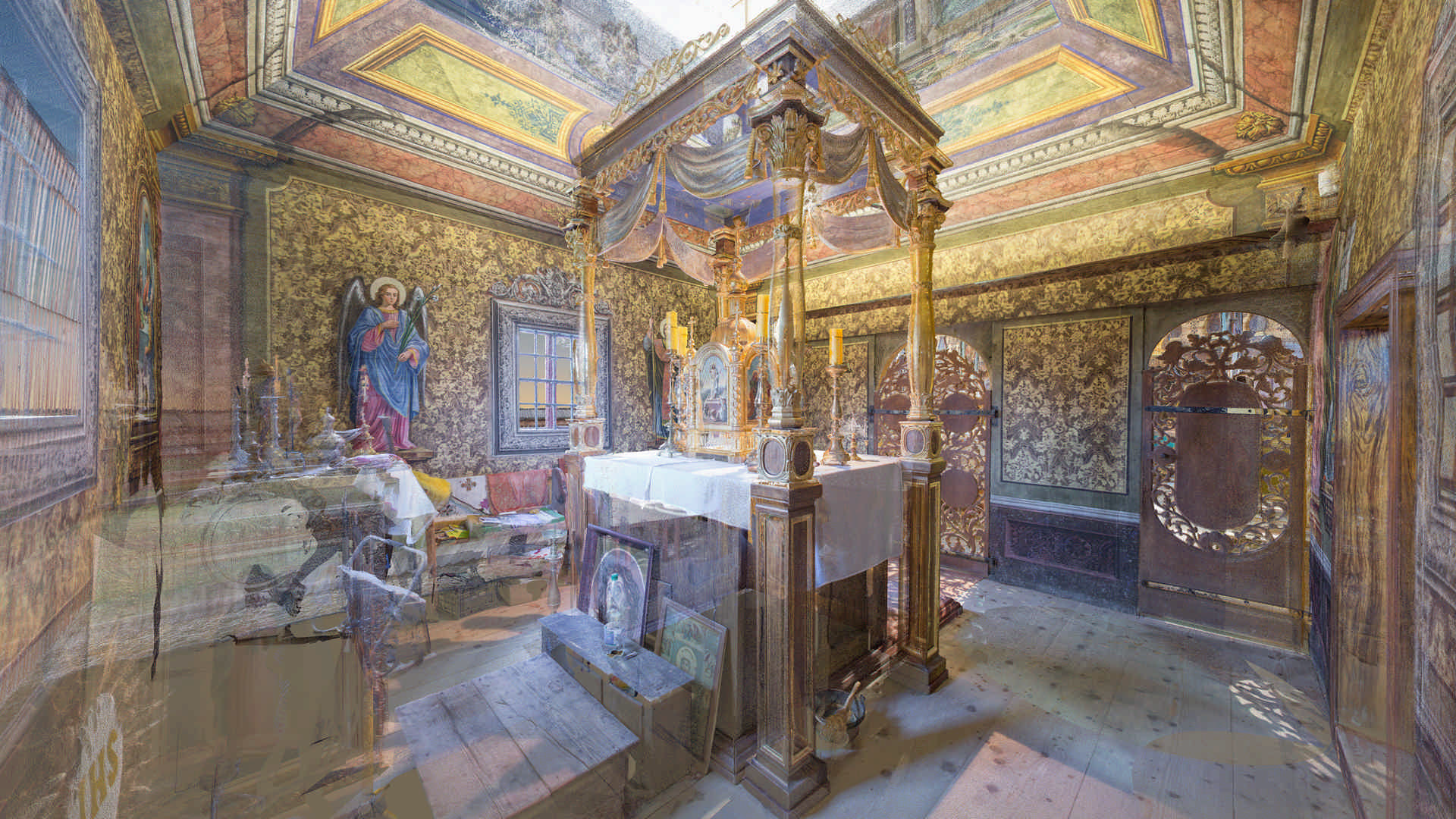Kwiatoń – Orthodox church of St. Paraskevia
It was built from fir wood around the mid-17th century. It is classified as a North-western Lemko church. It is an extremely charming building. Its soaring silhouette blends harmoniously with the old trees and fields nearby, as well as the panorama of the mountains.
The church is a log building. Not a single nail was used for its construction. The elements were connected using wooden dowels. The walls and onion domes of the towers are covered with shingles. The building is light brown. The forged crosses with a single cross beam are the only iron elements. They crown each of the domes of the three towers.
The roof over the nave is three-tiered. The roof over the sanctuary is two-tiered.
All windows are rectangular. Three of them are located in the southern façade, while the northern and eastern façades have two windows each.
The wood used in the construction of such buildings had to be processed very carefully. Several-hundred-year-old firs were cut down only during the period between All Saints’ Day and Epiphany. The logs would lie there until May. Then they were brought in and left for 5 years. They then were cut into boards and beams, which matured for the next 10 years. Only then was the building material ready and carpenters could start the construction of the temple.
The length of the entire building: 19 m
The height of the tower over the matroneum: 21.5 m
The height of the tower over the nave: 17.5 m
The height of the tower over the sanctuary: 12 m
The width of the matroneum: 4 m
The width of the nave: 6.5 m
The width of the sanctuary: 4.5 m
The icon in the church in Kwiatoń
The icon was part of the temple’s original iconostasis. It was made by an unknown author in the 2nd quarter of the 17th century. It is a horizontally arranged rectangle 90 centimeters high and 244 centimeters long. The icon is now displayed on the front side of the modern altar table. It is standing in the nave, in front of the iconostasis. The icon is dominated by yellow, green, red, and white. Over the centuries, the colors have faded slightly. The characters are depicted according to the old tradition of making icons. The faces and robes were painted in a very simplified way, without chiaroscuro, using clear, dark outlines. The icon depicts eight people and two Archangels. Each head is surrounded by a nimbus made of a shiny silver-plated plaque. The composition consists of two parts. They are separated by a vertical red strip. On the left side, we have a group of five Apostles and to the right, there is a group gathered around Christ sitting on the throne.
The icon was part of the so-called Deesis row of the iconostasis. The name comes from Greek and means ‘intercession’, ‘intercessory prayer’. In the right part of the composition, we can see Christ. He is sitting on the throne. He has the Theotokos on his right and Saint John the Baptist on his left. Next to the Savior’s head, we can see two winged Archangels – Michael and Gabriel. To the left of the group, there is a row of five Apostles. Their silhouettes and the figure of Jesus are almost as tall as the whole icon. Mary, Saint John the Baptist, and the Archangels are much smaller. The top strip of the background is yellow. It is decorated with red floral ornaments. It also holds Cyrillic inscriptions with the names of the characters. The lower part of the background is green, decorated with dark green leaves.
Christ is sitting straight on an ornamented throne. His brown hair is sticking to his head and falling on his shoulders. It is tacked behind his large ears clearly protruding from his head. His large dark eyes are set close together. His ruddy face is covered by a brown beard. Christ is raising his right hand in a gesture of blessing. In the left hand, he is holding an open book of the Gospel. His majestic silhouette is covered in a bright cloak with a brown tunic decorated with a yellow floral pattern underneath. We can see his bare feet sticking out from behind its lower edge. They are stepping on a red footstool. The Archangels are hovering symmetrically next to the Savior’s head. Over his right shoulder, we have Michael with red wings and, above the left one, Gabriel with yellow wings. Both of them are dressed in white and red robes. They are holding round white medallions with letters – Jesus Christ’s initials.
To the left of the throne, there is the Theotokos in a red cloak and a white robe. To the right of the throne – John the Baptist in a red robe.
All of the five Apostles are depicted in a standing position. Their heads are surrounded by silver halos. Saint Peter is standing first to the left of the vertical strip. In his left hand, he is holding a large key. He has gray hair and a beard. His dark eyes are turned towards Jesus. He is in motion, dressed in a white robe and yellow cloak. Next on the left is Saint Matthew the Evangelist. He is also a gray-haired old man with a long beard. He is holding a closed book. He is dressed in a red robe. Then we have Saint Luke the Evangelist. He is a dark-haired bearded man with a book. He is wearing a yellow robe and a bright cloak. Next we have gray-haired Simon walking in a red robe. In his left hand, he is holding a white scroll, i.e. a book in the form of a rolled-up scroll. His head is turned to the left, towards another Apostle – Saint Bartholomew. He is the only one with smooth youthful cheeks without facial hair. He is wearing a red robe and a yellow cloak. He is clutching a scroll in his right hand.
Video:








